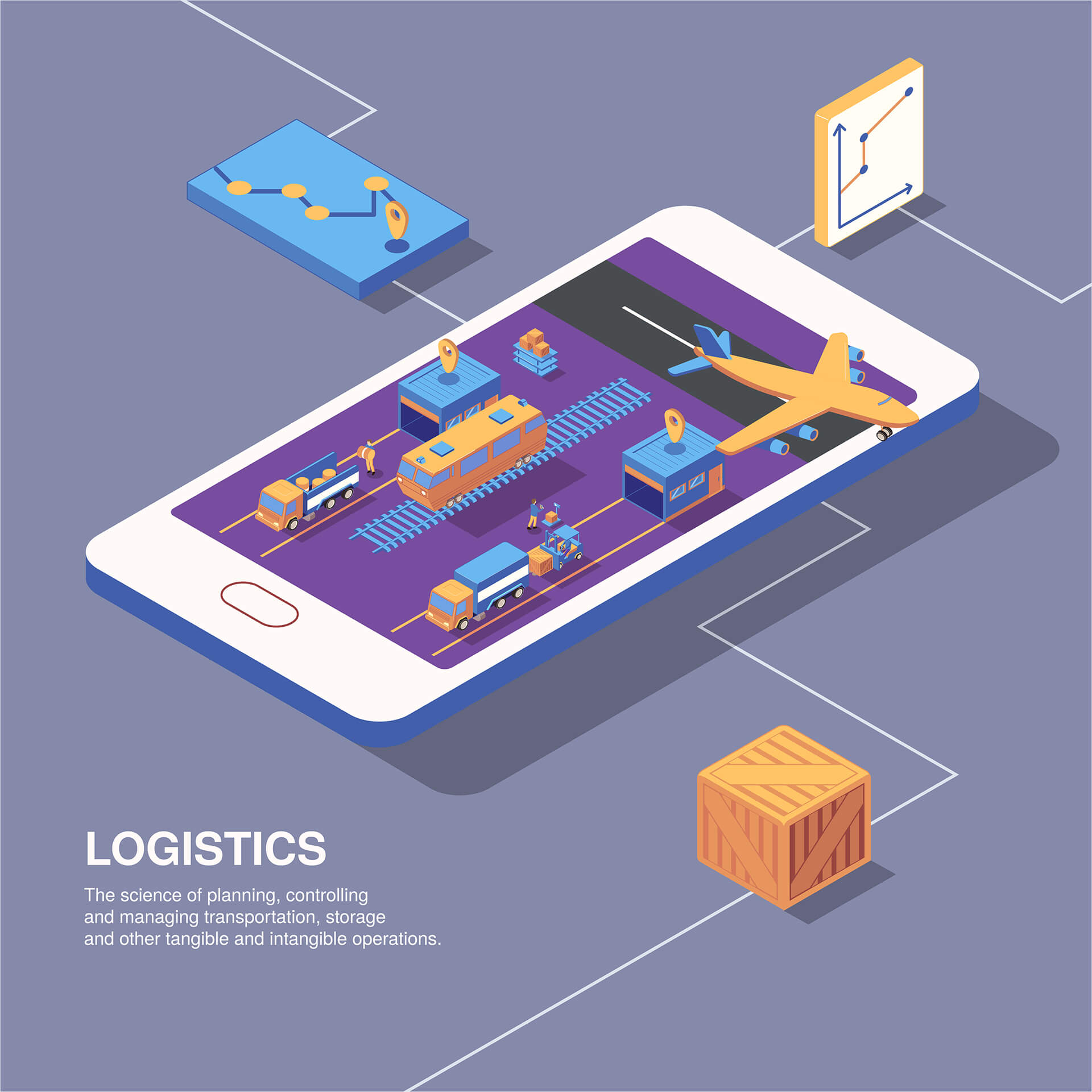Thank You!
A confirmation latter has been sent to your email. Check your inbox.


Digital transformation in logistics has sprung forth as a catalyst for progress, reshaping an industry that has traditionally relied on manual processes. Additionally, innovative technologies are driving logistics forward, turning traditional routes into dynamic highways of efficiency. Tech-forward solutions such as IoT-enabled tracking, AI-driven forecasting, autonomous vehicles, blockchain, cloud computing, and augmented reality are streamlining logistics operations, increasing efficiency, and meeting the evolving demands of consumers and businesses alike. Data suggests that the global digital logistics market is expected to grow by over $20 million by 2024, while the growth of IoT in logistics is expected to grow at a compound annual growth rate of 15.5% by 2025. Therefore, digital transformation is changing the logistics industry profoundly, enabling companies to improve their efficiency, reduce costs, and enhance their overall service quality, achieving optimal results holistically.
On top of every benefit that the logistics and transportation industry is attaining through this palliative dose of digitalisation, It has revolutionised the logistics industry in many ways, providing numerous benefits for businesses and consumers. One major advantage is the ability to track shipments in real-time, providing greater visibility and transparency throughout the supply chain, which was in no way possible with traditional methodology.
Out of many substantial areas of transformation covered by technologies in logistics, Automation is the one that is serving as oxygen to the nerves of logistic management. It has enabled logistics providers to automate many of their processes, such as inventory management, order processing, and transportation planning, which can further improve efficiency and reduce errors. Moreover, this transformation has made it possible to develop new delivery models, such as same-day and on-demand delivery, facilitating greater convenience for consumers and businesses
By moving logistics operations to the cloud, logistics companies can improve their agility, reduce their IT costs, and gain access to powerful tools and technologies that were previously out of reach. Cloud-based solutions can also help logistics companies to collaborate more effectively with their partners and customers, enabling them to share data and work together more efficiently.
Data is at the core of Logistics transformation. It involves everything from marketing and sales to supply chain and warehouse management. These include many supplementary components as-
AI and IoT are transforming the logistics industry by offering new tools and strategies for businesses to optimise their operations and improve the customer experience. AI can be used to optimise delivery routes, reduce transportation costs, and improve demand forecasting accuracy. On the other hand, IoT involves connecting physical devices and sensors to the internet, allowing businesses to collect real-time data on their operations, such as the location and condition of goods in transit, with real-time tracking.
We certainly can not deny that imparting technology in the logistics sector has turned out to be one of the most successful transformations witnessed by industries for years. With the rise of e-commerce and other digital technologies, businesses are swiftly adapting and getting immersed in these new norms of conducting business to stay competitive and meet the needs of their customers. Well!, Digital transformation enables logistics companies to do just that by providing new opportunities for growth, innovation, and efficiency. Here we have enunciated a guide to ‘digital strategy’, by which we root for our client companies in driving tailor-made transformation to digital logistics. A guide to successful digital strategy for executing digital transformation in logistics - A well-crafted digital strategy allows logistics providers to leverage technology and innovation to optimise processes, enhance customer experiences, and gain a competitive edge.
However, Digital transformation in logistics portrays the evolution we are witnessing right now, where logistics companies are no longer just shipping goods from one point to another; they have become strategic partners involved in every step of the process, from purchase to delivery and beyond. In addition, sustainability is at the heart of this transformation, with greener practices and eco-friendly solutions reducing the industry's carbon footprint. Customer satisfaction soars as logistics providers offer personalised services and tailored experiences. The digital transformation in logistics has led to the nimble, resilient, and ready-to-embrace challenges of tomorrow.
Digital transformation in logistics is no longer optional—it's essential for staying competitive in a fast-paced, global market. From AI-powered route planning to IoT-enabled inventory tracking and blockchain-backed transparency, smart logistics solutions are reshaping the industry. By embracing automation, data analytics, and supply chain digitalization, logistics companies can improve operational efficiency, enhance customer satisfaction, and scale sustainably. To stay ahead in 2025 and beyond, businesses must continuously innovate and adopt emerging logistics technologies that streamline their supply chain and optimize performance.
Our expertise spans a diverse and proven tech stack, carefully employed to build solutions that meet evolving business needs with precision and reliability.
BACK END
FRONT END
CONTAINERIZATION
AUTOMATION
CI/CD TOOLS
MONITORING
PROGRAMMING LANGUAGES
FRAMEWORKS
LIBRARIES
CLOUD SERVICES